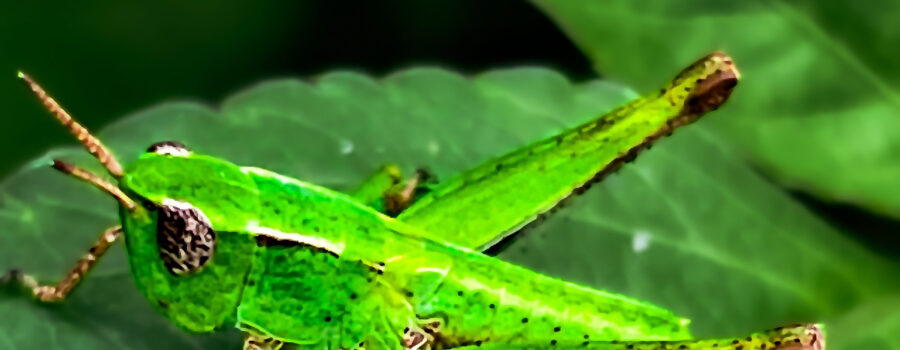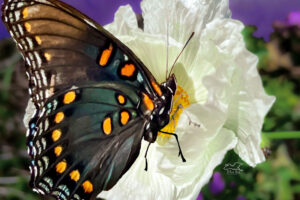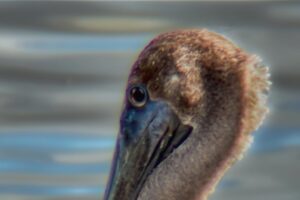Colorful Short-winged Green Grasshoppers have Come Back with Spring

Now that spring is here and grass is growing, so are grasshoppers. I’ve been seeing quite a few American bird grasshoppers, and a lot of these short-winged green grasshoppers (Dichromorpha viridis). Most of the ones I’ve been seeing have been nymphs, which look very different from the adults. Instead of being green, like the female above, they are a mottled grayish brown. They do still have the short antennas and wings as well as the slanted head and eyes. Below is an example of one of the nymphs that was crawling around on some Carolina geranium plants.

The males also look a little different from the females. While the females are usually a solid green, the males are usually bicolored. They are usually green with a brown back or light brown with a darker brown back. Males also have somewhat longer wings and have a little bit better flight capability. They still tend to rely main on jumping for getting around, though. Since they don’t fly as well as a lot of other grasshoppers, I find them a little easier to photograph, but if they choose, they can still move surprisingly quickly. Like most grasshoppers, they are very alert and attentive to their surroundings so that they can avoid predators.

Short-winged green grasshoppers can survive for about a year and sometimes slightly longer in warmer climates. They’re found throughout the eastern United States and Canada as well as in parts of Mexico and Central America. They eat mainly grasses both wild and the lawn varieties. These were all photographed in wild areas. Some in grass and flowers behind my office and the nymph was found in Gothe State Forest, although I’ve been seeing them all over the place right now. Like so much of the insect world, I really enjoy watching them as they move around and feed. I especially like those interesting mottled eyes. I know a lot of people don’t much care for grasshoppers, especially ones that eat lawn grasses or garden plants, but this species doesn’t usually cause a lot of damage and they’re good for the soil since they recycle plant material.






Recent Comments